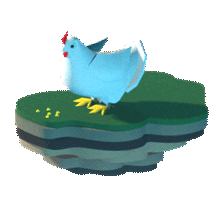The CHIMERA project was presented at ISPRA (Higher Institute for Environmental Protection and Research), on 7 April 2022, investigating some aspects of interest related to emissions. As part of the Ministry of Ecological Transition (Mite), ISPRA is a public research body that carries out a series of services and activities relating to various thematic areas (Air, Water, Biodiversity, Climate Change, Waste, Sustainable Development, etc.). In particular, as regards air, in addition to organizing and making available the national air quality data that it collects as part of the European exchange of information (Exchange of Information, EoI), it conducts in-depth studies on “Emissions”: ‘National inventory of atmospheric emissions makes it possible to identify the main sources of emissions at national level and describe their trends over time. As regards greenhouse gases, the emission reduction targets, which concern the agriculture sector, are defined by the Effort Sharing Regulation: -33% by 2030, compared to 2005. And as regards the decarbonization strategy by 2050, the difference is of other sectors, the emissions deriving from agriculture, precisely due to the peculiarity of the food production sector, are partly incompressible and therefore the contribution of this sector to greenhouse gas emissions is increasingly important. (Source: “Focus on emissions from agriculture and livestock”, E. Di Cristofaro, ISPRA 2020). The agriculture sector accounts for about 7% of national greenhouse gas emissions, with a weight of greenhouse gas emissions from livestock farming equal to 79%, of which the poultry sector accounts for 3.3%. The agriculture sector also accounts for 94% of national ammonia emissions, with a weight equal to 83% relative to livestock, for which the poultry sector accounts for 12.1%. A particularly interesting issue is that of emissions for the CHIMERA project which also aims to reduce the impact of poultry manure emissions, due to direct spreading, by proposing a new sustainable model for the management of chicken manure based on the circular economy and on the production of fertilizer and energy, thanks a plant small in size.


Fonte: “Focus sulle emissioni da agricoltura e allevamento” (E. Di Cristofaro, ISPRA 2020)



